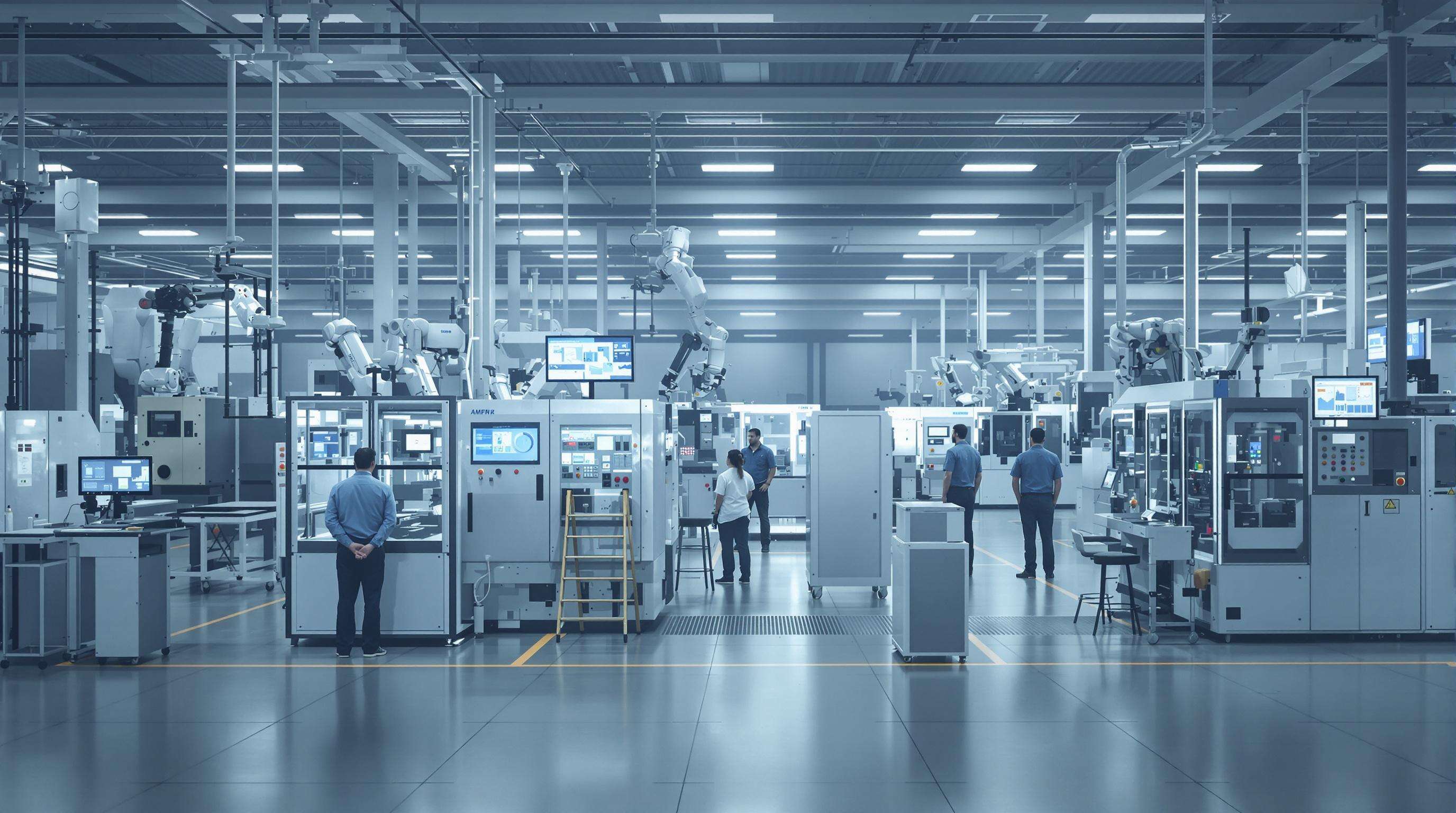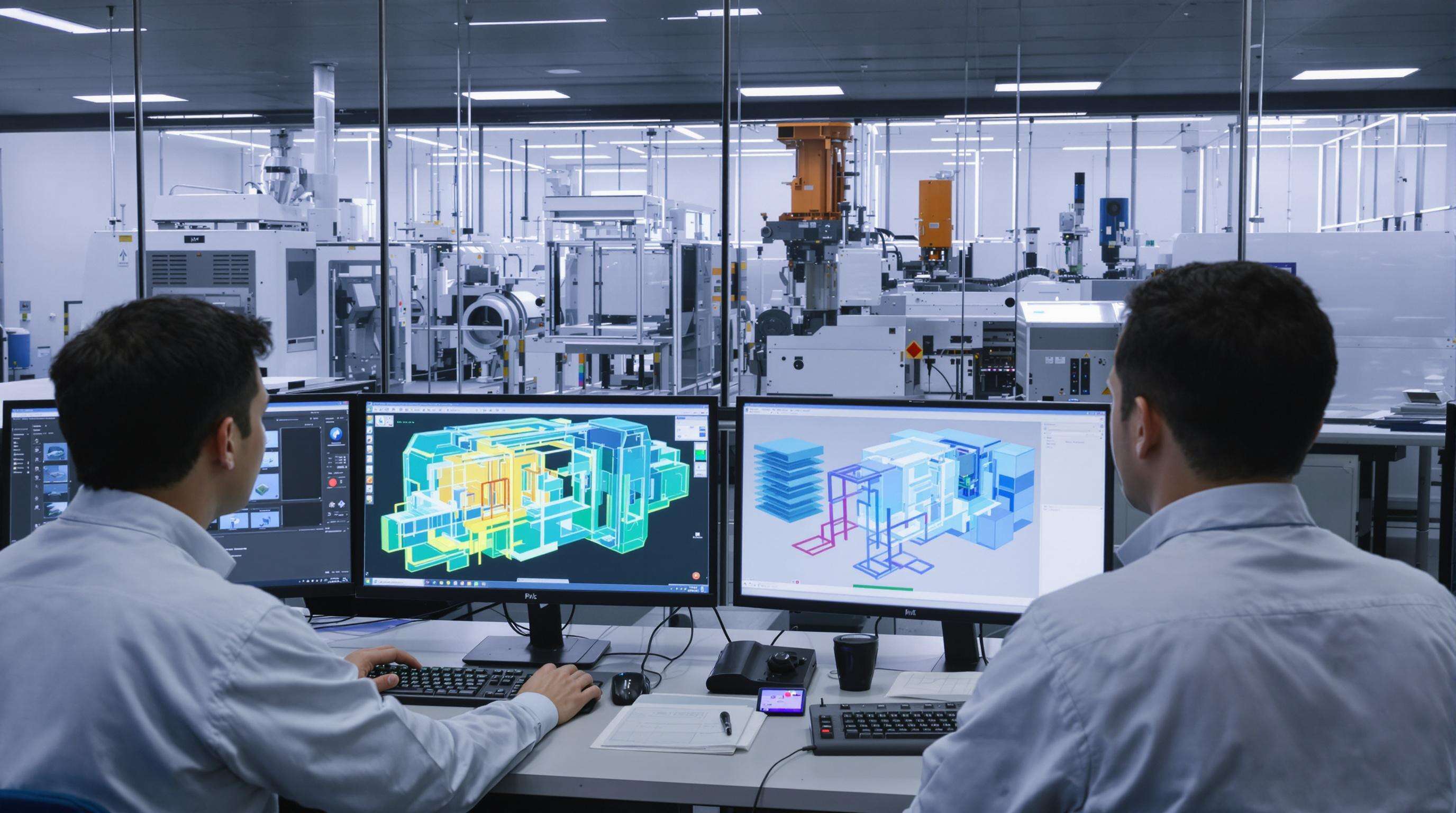
Modern machine learning dynamically optimizes energy usage by analyzing real-time data from heating zones and hydraulic systems. These AI tools adjust parameters like cycle times and cooling intensity, reducing power consumption by 22-38% per batch—delivering six-figure annual savings while maintaining output quality.
High-speed cameras (200+ fps) paired with infrared sensors scan for micro-fractures, thickness inconsistencies, and surface flaws during molding. Real-time quality control integrations reduce scrap rates by 90% and ensure ±0.1mm dimensional tolerances, preventing costly recalls.
While initial investments in robotics and AI are substantial, operational data shows 18-month breakeven periods. Energy savings (25-40%), reduced material waste (15-25%), and 30% longer machinery lifespans create compounding ROI within three years.

Digital twins—virtual replicas of physical systems—optimize production by simulating changes without disrupting active lines. This reduces trial cycles by 35% and improves first-pass yields (Deloitte 2023).
3D modeling replicates polymer flow with 94% accuracy, identifying optimal gate locations and cooling channels before physical mold production. Digital twins cut cycle time development by 28% by automating viscosity adjustments based on resin temperature.
Infrared networks mapped to digital twins detect heater band failures 72 hours in advance. Machine learning predicts screw and barrel wear with 89% accuracy (ASME 2023), reducing unplanned downtime by 41%.
VFD-equipped compressors adjust motor speeds to real-time demand, reducing consumption by 38–42% (Euromap 2024). They also lower peak power draws by 55%.
Precise thermal management maintains temperatures within ±0.5°C, addressing 17% of energy waste in traditional setups.
| Parameter | Open-Loop System | Closed-Loop System |
|---|---|---|
| Energy Use (kWh/kg) | 1.8 | 1.3 |
| Cycle Time Consistency | ±12% | ±3% |
| Scrap Rate | 4.2% | 1.7% |
A beverage manufacturer achieved 22% energy reduction per unit by using 14% less PET resin while maintaining burst pressure, saving 780 tons annually.
Automated palletizers handle 40+ units/minute, cutting labor expenses by 50% and manual handling by 90%. They integrate seamlessly with existing lines.
Real-time dashboards track OEE and thermal stability, enabling preemptive adjustments. Facilities using these systems report 27% higher throughput consistency and 19% less material waste.
While automation may displace 3.4 million roles by 2030 (McKinsey 2024), retraining programs can transition 65% of workers into higher-value technical positions.
Cloud platforms synchronize schedules across facilities, improving equipment utilization by 18-22%. Digital twins enable collaborative planning, and subscription services make advanced tools accessible to smaller factories.
68% of industrial breaches cause 48+ hours of downtime. Key defenses include:
Blockchain verifies resin provenance and recycled content, reducing disputes by 35%. Smart contracts automate payments, and decentralized ledgers cut recall investigations from weeks to hours.
Automated drying maintains optimal moisture levels, while enclosed conveyors prevent contamination. These systems reduce manual work by 35-50% and cut mold-change downtime by 40%.
Specialized handling for recycled resins—like dedicated drying circuits and modified hoppers—enables 30-70% recycled content without compromising part integrity or speed.
Digital twins are virtual replicas of physical systems. They optimize production by simulating changes without disrupting active lines, reducing trial cycles and improving first-pass yields.
AI systems analyze real-time data to adjust parameters like cycle times and cooling intensity, leading to significant reductions in power consumption.
Automation may displace some roles, but retraining programs can transition workers into higher-value technical positions. This ensures the workforce adapts to the changing landscape.
 Hot News
Hot News2024-10-29
2024-09-02
2024-09-02

Copyright © 2024 Changzhou Pengheng Auto parts Co., LTD